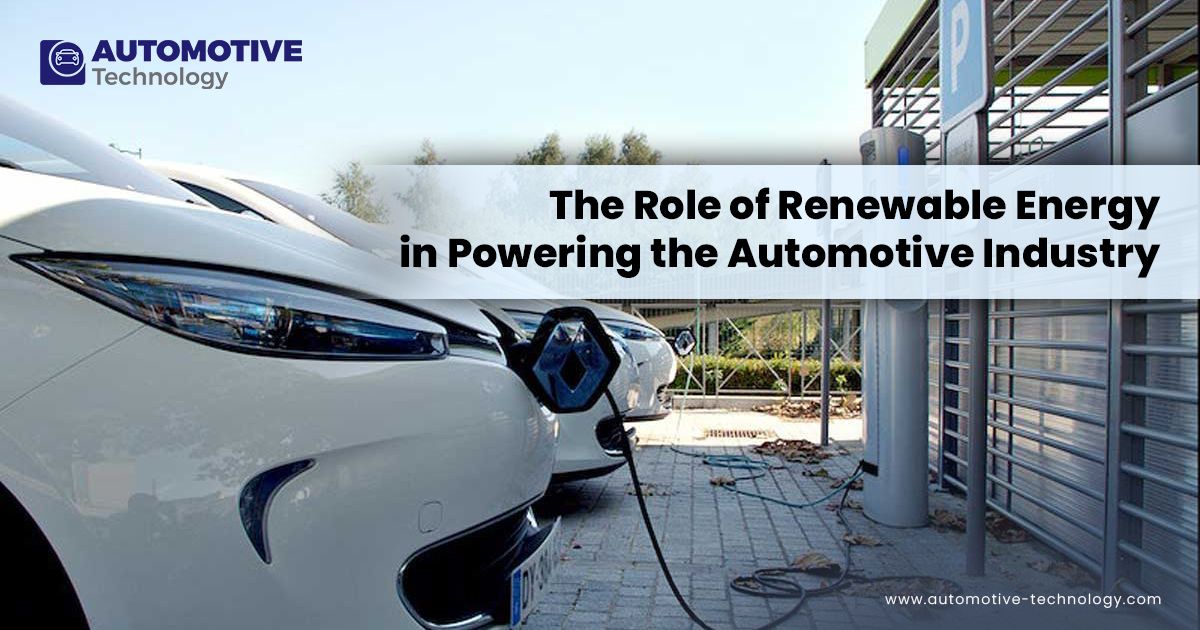
The automotive industry, bless its heart, is a wild playground where genius and absurdity often share a mechanic’s bay. For every groundbreaking invention that reshapes how we drive—think anti-lock brakes or fuel injection—there’s a parade of ambitious prototypes and “brilliant” ideas that, well, let’s just say they ended up in the automotive equivalent of the digital dustbin. These aren’t just minor missteps; these are the innovations that backfired spectacularly, leaving us scratching our heads and wondering if anyone actually *asked* for them.
We’re talking about the brave, bold, and sometimes downright bizarre attempts to push the envelope, where creativity collided with cold, hard practicality. From utopian visions of eco-friendly transport to safety features that became more annoying than reassuring, the history of cars is littered with ideas that sounded amazing on paper but couldn’t survive the brutal reality of the open road or the fickle nature of the consumer. It’s a fascinating look at where the industry got it gloriously wrong, proving that even the most well-intentioned advancements can take an unexpected turn for the worse.
So, buckle up, because we’re about to take a deep dive into some of the most memorable automotive innovations that drove straight into a wall. We’re talking about concepts that promised to revolutionize transportation but instead became cautionary tales, a testament to the unpredictable nature of progress. Let’s explore the first batch of these intriguing failures, peeling back the layers on why these seemingly bright ideas dimmed out.
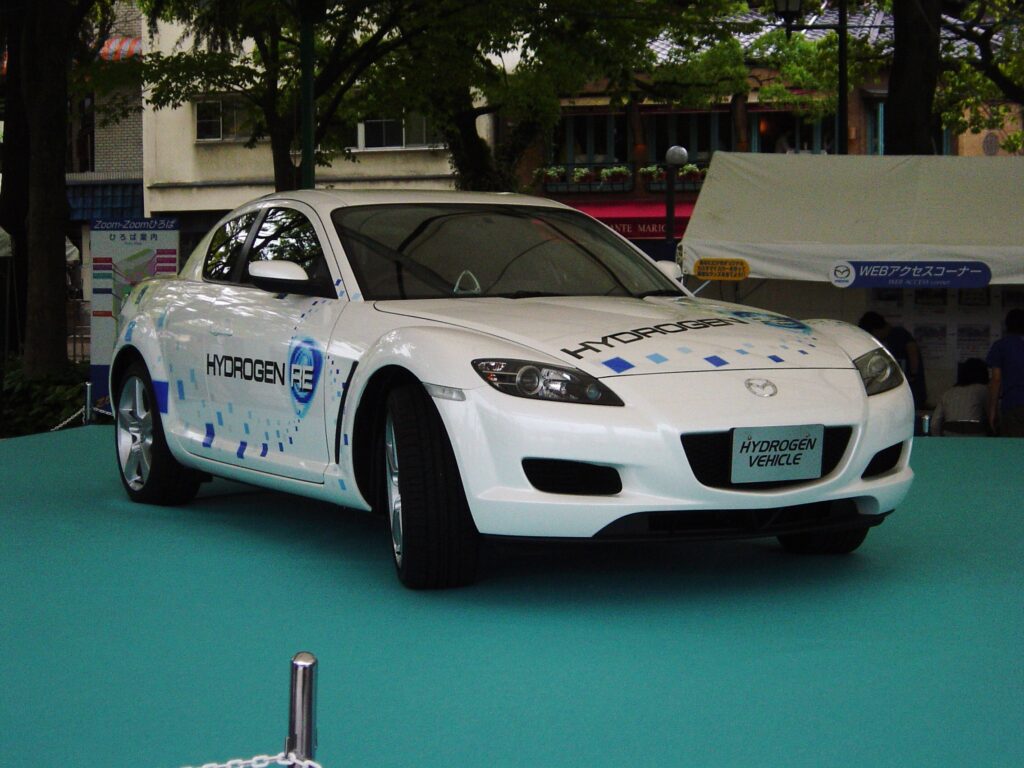
1. **Hydrogen-Powered Cars**Hydrogen-powered cars, oh boy, they’ve been dangling the carrot of a zero-emissions future in front of us for what feels like eons. The idea is undeniably elegant: hydrogen fuel cells whip up electricity, and all that comes out the tailpipe is water. A genuinely clean dream machine, right? For a while, it seemed like the logical next step in our quest for sustainable transport, a shining beacon promising freedom from fossil fuels and a breath of fresh air for our planet.
But here’s the rub, and it’s a big one: the reality has been far less utopian than the vision. These vehicles have consistently struggled with a trifecta of problems that have kept them firmly in the niche category. First off, the sheer cost of producing these marvels is prohibitively high. We’re not just talking about the car itself, but the entire infrastructure needed to support it – a massive undertaking that involves a lot of greenbacks.
Then there are the storage difficulties, which are no joke. Hydrogen, being the feisty element it is, demands specific and often complex solutions for safe and efficient storage on board a vehicle. And perhaps the most glaring issue? The glaring absence of a fueling infrastructure. It’s a classic chicken-and-egg scenario: no one wants to buy a hydrogen car if there are no places to fill it up, and no one wants to build fueling stations if there aren’t enough hydrogen cars on the road.
To add insult to injury, while hydrogen was trying to get its act together, battery electric vehicles – its direct rival – were busy making serious gains. Battery tech rapidly decreased in cost, charging infrastructure grew, and range anxiety started to shrink. Suddenly, the seemingly insurmountable challenges of EVs became less daunting, leaving hydrogen-powered cars scrambling to catch up. It’s a prime example of a theoretically superior technology getting outmaneuvered in the marketplace.
Read more about: Toyota’s Hypothetical ‘Water Engine’: Unpacking Hydrogen’s Disruptive Potential and the Future of Mobility Beyond EVs
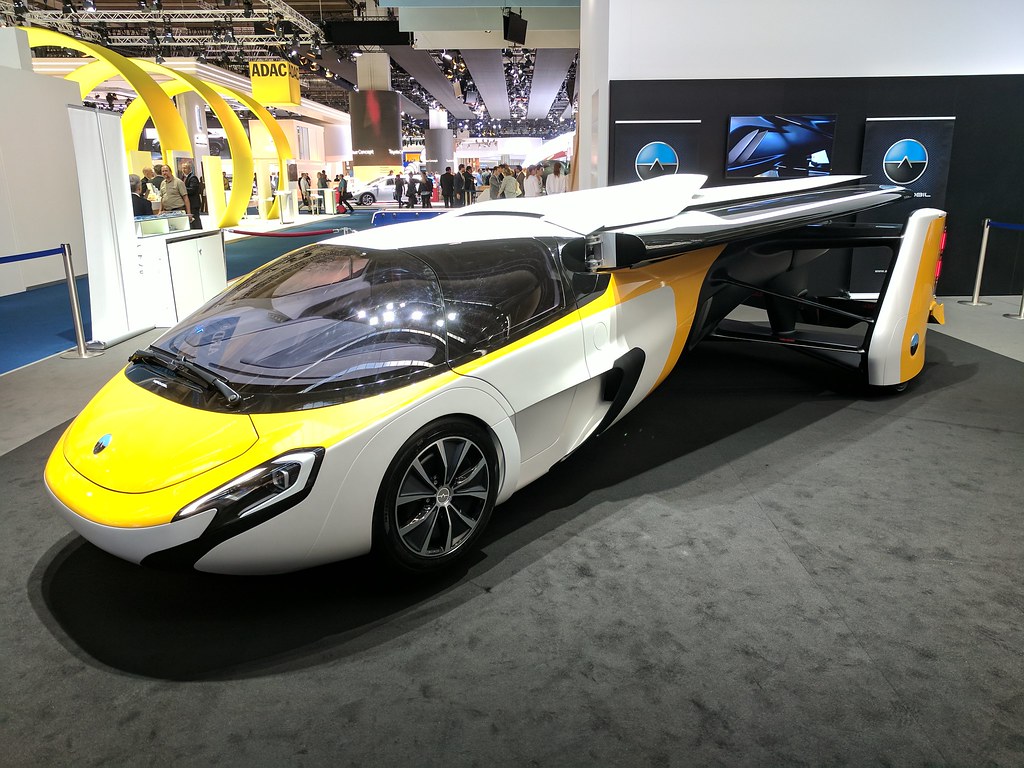
2. **Flying Car**Ah, the flying car. If you’ve ever dreamt of ditching rush hour traffic by simply taking to the skies, you’re not alone. This fantastical beast has been a cornerstone of futuristic visions since, well, forever. Every sci-fi flick worth its salt features them, zipping between skyscrapers, promising an escape from the mundane asphalt below. It’s the ultimate fantasy for anyone stuck in gridlock, a symbol of ultimate freedom and technological prowess.
Yet, despite all the hype and countless prototypes, the flying car remains firmly anchored in the realm of science fiction rather than practical reality. The challenges facing these dual-purpose marvels are, frankly, monumental. Safety concerns top the list, and for good reason. Imagine the chaos of a mid-air collision, or a faulty engine sending a car-plane plummeting onto a suburban street. The sheer liability alone is enough to make insurance companies weep.
Regulatory hurdles are another skyscraper-sized obstacle. Aviation laws are already incredibly stringent, and trying to mesh them with automotive regulations is a bureaucratic nightmare. Who’s in charge when a flying car is on the road? Who governs its flight path? And let’s not forget the need for pilot training for drivers – because, let’s be honest, parallel parking is hard enough for some folks, let alone navigating three-dimensional airspace.
The technological complexities involved in creating a vehicle that can both drive efficiently on land and fly efficiently in the air are simply staggering. It’s not just about adding wings to a car; it’s about balancing weight, aerodynamics, power sources, and control systems for two vastly different modes of operation. So far, no one has managed to truly crack that code, leaving the flying car as a spectacular, perpetually “just around the corner” innovation that consistently fails to materialize as a viable product for the masses.
Read more about: The Revival Circuit: 12 Forgotten Concepts That Changed the Automotive Industry

3. **Self-Healing Paint**Now, here’s an innovation that sounded like pure magic: self-healing paint. Imagine, a minor scratch on your gleaming automotive pride and joy, and poof! It just… repairs itself. No more agonizing over parking lot dings or gravel-induced imperfections. This technology promised to keep our vehicles looking showroom-fresh with minimal effort, a true godsend for anyone who’s ever winced at the sight of a new blemish on their paintwork. It was the dream of every car owner, blending advanced chemistry with everyday practicality.
The concept was definitely promising, sparking visions of perpetually pristine vehicles and significantly reduced body shop bills. The idea was simple enough: special coatings embedded with microscopic capsules that, when ruptured by a scratch, would release a healing agent to fill and seal the damage. It sounds like something straight out of a James Bond movie, a fantastic leap forward in material science applied directly to our daily commute.
However, like so many promising ideas, self-healing paint stumbled on the hard ground of real-world application. Its primary downfall was, you guessed it, cost. The technology proved to be incredibly expensive to produce and apply, immediately pushing it out of reach for the average consumer. Automakers, always mindful of the bottom line, found it difficult to justify the added expense for a feature that wasn’t strictly essential.
Beyond the price tag, there were also significant limitations in its effectiveness. While it could handle minor scuffs and swirl marks like a champ, deeper scratches – the kind that really make you sigh – were beyond its capabilities. A proper keying or a significant fender-bender still required traditional bodywork. So, while the paint could fix some superficial boo-boos, it couldn’t perform miracles, and the high costs combined with its limited repair depth ultimately prevented it from becoming widely adopted. A good idea, but not quite good enough.
Read more about: Elon Musk’s Definitive Stance: Separating Fact from Fiction in the Tesla Phone Frenzy
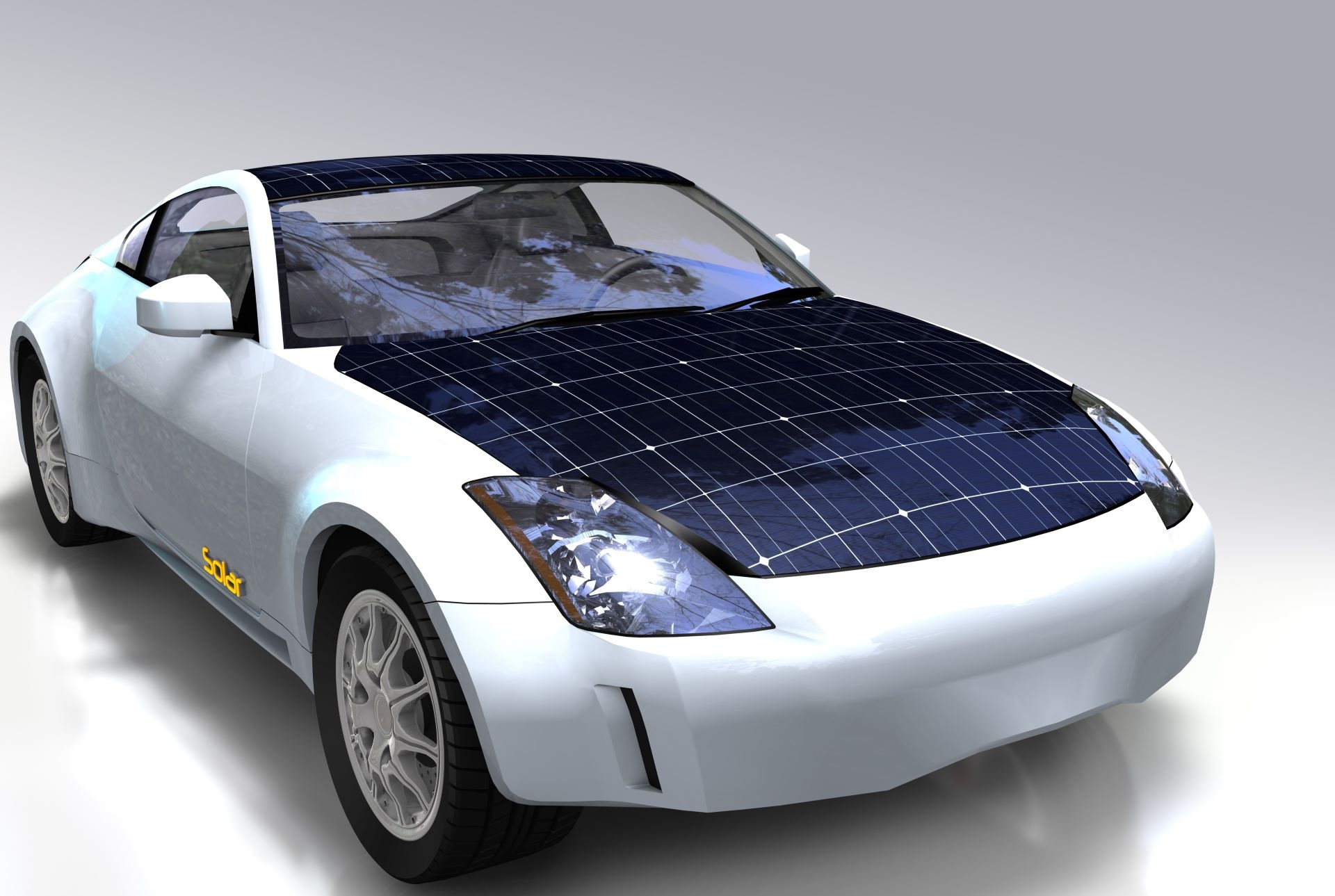
4. **Solar-Powered Cars**Talk about an innovation that’s got its heart in the right place! Solar-powered cars, basking in the sun’s glory and converting those rays into propulsion, seemed like the ultimate eco-warrior on wheels. The appeal for sustainability is undeniable: drive for free, with zero emissions, just by soaking up some good old sunshine. It’s a beautiful vision of harmony between technology and nature, promising endless journeys powered by the most abundant energy source available.
Photovoltaic cells transforming sunlight into energy directly on your car’s body? What’s not to love? This concept held the promise of true energy independence for drivers, imagining a future where charging stations were obsolete and the grid was irrelevant. It sounded like the perfect solution to our energy woes, a perpetual motion machine fueled by the sky itself.
But alas, reality often has a way of raining on our parade, sometimes literally. Despite their inherent appeal, solar-powered cars have consistently failed to become practical for mainstream use. The biggest hurdle? Their achingly limited power output. The surface area of a typical car simply isn’t large enough to mount enough solar panels to generate sufficient energy for everyday vehicle use. It’s like trying to power a skyscraper with a AA battery.
Add to that the pesky reliance on sunny weather. What happens on a cloudy day? Or at night? Or during a Canadian winter? The car essentially becomes a very expensive, very heavy paperweight. The inefficiency of current solar technology in providing enough juice for meaningful driving has been the ultimate undoing of this otherwise brilliant, sustainable dream. It’s a classic case of a fantastic concept being crippled by present technological limitations.
Read more about: Don’t Waste Your Cash: Understanding EV Battery Longevity and Replacement Realities

5. **Magnetic Suspension System**If you’ve ever dreamt of floating down the highway in a cloud of pure comfort, then the magnetic suspension system probably sounded like heaven. This innovative concept promised a ride smoother than a baby’s bottom by using magnets to literally levitate the car slightly off the ground, effectively reducing friction and isolating occupants from road imperfections. Imagine gliding over potholes as if they weren’t even there! It’s the kind of luxury that could redefine automotive comfort.
The promise was clear: a significantly enhanced driving and passenger experience, transforming mundane commutes into serene journeys. By leveraging the power of magnetism, engineers envisioned a system that could dynamically adjust to road conditions, offering unparalleled stability and responsiveness without the mechanical wear and tear of traditional suspension components. It was a bold step towards a truly futuristic ride.
However, like many ambitious leaps, magnetic suspension systems couldn’t quite levitate past the concept stage into widespread adoption. The primary culprits were, once again, cost and complexity. Developing and implementing such a sophisticated system is incredibly expensive, making it a non-starter for mass-market vehicles. This isn’t your grandpa’s leaf spring setup; we’re talking cutting-edge electromagnetics and precision control.
Beyond the initial investment, challenges in maintenance and long-term durability also cast a long shadow. What happens when a complex magnetic component fails? Repairs would undoubtedly be specialized and costly. So, while the idea of a frictionless, perpetually smooth ride was undeniably appealing, the exorbitant price tag, intricate engineering, and potential maintenance headaches conspired to keep magnetic suspension systems a fascinating footnote in automotive innovation, rather than a mainstream revolution.
Read more about: Expert Insights: Luxury Cars You’ll Regret Buying Due to Hidden Costs and Reliability Issues

6. **Ford’s Automatic Seat Belts**Let’s take a trip back to the late 1980s and early 1990s. Faced with escalating safety regulations, automakers like Ford decided to get… creative. Enter the automatic seat belt. Now, the intention here was pure: to comply with safety regulations and presumably save lives by ensuring drivers and passengers were always belted in, no excuses. The idea was to eliminate human error (or laziness) from the safety equation, making buckling up a seamless, involuntary action.
These systems came in a few flavors, but the most common involved a motorized shoulder belt that would slide into place across the occupant when the car door closed. It was ingenious in its mechanical ambition, a visible demonstration of engineering trying to force a safety habit. The government wanted more people belted, manufacturers needed to comply, and *voila* – a seemingly foolproof solution was born.
The problem? Consumers absolutely loathed them. “Cumbersome” is probably an understatement. Imagine getting into your car, and before you’ve even settled, a belt is whirring across your chest, sometimes catching your hair, your clothes, or just feeling utterly claustrophobic. They weren’t exactly built with all body types in mind, making for an often uncomfortable and irritating experience. It was an innovation that tried to enforce safety but instead became a daily nuisance.
Ultimately, consumer unpopularity was the death knell for Ford’s automatic seat belts. People rebelled against the intrusion, finding them more annoying than beneficial. Fortunately, better solutions were on the horizon. These systems were eventually replaced by the widespread adoption of airbags combined with manual seat belts enhanced by tensioners and advanced pretension systems. It was a clear victory for user-friendly, effective safety over an innovation that, despite its good intentions, spectacularly backfired by alienating the very people it was designed to protect.
Read more about: Unleashing Performance, Ensuring Protection: 12 Sports Cars Where Speed Meets Stellar Safety Ratings

7. **Laser Headlights**When it comes to cutting-edge illumination, laser headlights sound like something out of a futuristic concept car, and for good reason. They promise superior brightness and an incredible range compared to even the best LED lights, literally cutting through the darkest nights with a focused, intense beam. This isn’t just about seeing a little further; it’s about transforming nighttime driving, making it safer and more confident with light sources that feel almost otherworldly in their power.
The technology is truly advanced, utilizing tiny lasers to excite a phosphor material, which then emits a bright white light. This allows for incredibly compact headlight units that can project light much farther than traditional systems, potentially reducing driver fatigue and increasing reaction time to hazards far down the road. For the automotive tech geeks among us, it’s a marvel of modern engineering, pushing the boundaries of what’s possible in vehicle lighting.
However, like a villain’s lair equipped with, well, lasers, there’s a catch. Two big ones, in fact, that have kept these dazzling innovations largely confined to the upper echelons of the automotive market. First and foremost is the cost. Laser headlights are incredibly expensive to produce and integrate, immediately placing them in the realm of optional extras for high-end luxury or performance models, like a six-figure BMW or an Audi R8. For the average commuter car, they’re simply not economically viable.
The second, and perhaps more critical, concern revolves around eye safety. While designed with multiple fail-safes and light diffusion, the sheer intensity of laser light raises legitimate concerns about potential eye damage in the event of an accident or system malfunction. Imagine the blinding potential in a head-on collision. These safety worries, coupled with the prohibitive cost, have severely limited their adoption across the broader automotive market. So, while laser headlights are undoubtedly brilliant, they remain an innovation that’s too bright and too pricey for everyday roads, proving that sometimes, even cutting-edge tech can be its own worst enemy.
Alright, so we’ve gawked at some pretty spectacular technological faceplants, the kinds of innovations that promised the moon but couldn’t even manage a decent orbit around the grocery store. But the automotive industry’s buffet of brilliant failures isn’t just limited to power sources and cutting-edge lights. Oh no, sometimes the wild ideas manifest in design choices so unconventional or luxury features so over-the-top that they were doomed from the drawing board. Let’s peel back another layer of this glorious automotive onion and explore the quirky, the opulent, and the downright bizarre ideas that simply couldn’t cut it.
Read more about: Hidden Powerhouses: Unearthing 14 Underrated Pony Cars You Forgot Existed

8. **Diagonal Parking**When you think about parking, you probably think parallel or perpendicular, maybe with a healthy dose of exasperation thrown in. But for a brief, bewildering moment, some folks in the automotive and urban planning world tossed around the idea of “diagonal parking” for maximized efficiency. The theory was simple enough: by angling cars into spaces, you could potentially squeeze more vehicles into a given area, and perhaps even make entry and exit a smidge easier. Sounds like a win-win for our ever-growing urban jungles, right?
The pitch for diagonal parking was pure utilitarian poetry. Imagine a world where every inch of curb space was optimized, where the flow of traffic could be tweaked to allow for smoother ingress and egress from parking spots. It was a fascinating concept that appealed to the data-driven minds, a seemingly elegant solution to the perennial headache of urban congestion and the never-ending quest for a parking spot.
However, theory and reality often perform a spectacular head-on collision, and diagonal parking was no exception. While it looked good on a blueprint, implementing it widely meant radically altering existing infrastructure – we’re talking about an expensive, city-wide overhaul of curb lines, road markings, and even traffic flow patterns. That kind of municipal surgery isn’t just costly; it’s a logistical nightmare that makes even the most seasoned city planners break into a cold sweat.
More crucially, it demanded a fundamental shift in established driving patterns and habits. People are creatures of habit, especially behind the wheel, and teaching millions of drivers a whole new way to park was simply too disruptive and, frankly, too much effort. So, despite its theoretical benefits, diagonal parking ended up as a fascinating thought experiment, ultimately shelved because the world wasn’t quite ready (or willing) to relearn how to park a car for marginal gains.
Read more about: Why the Genesis GV80 Black Makes BMW and Mercedes Scramble for Second Place
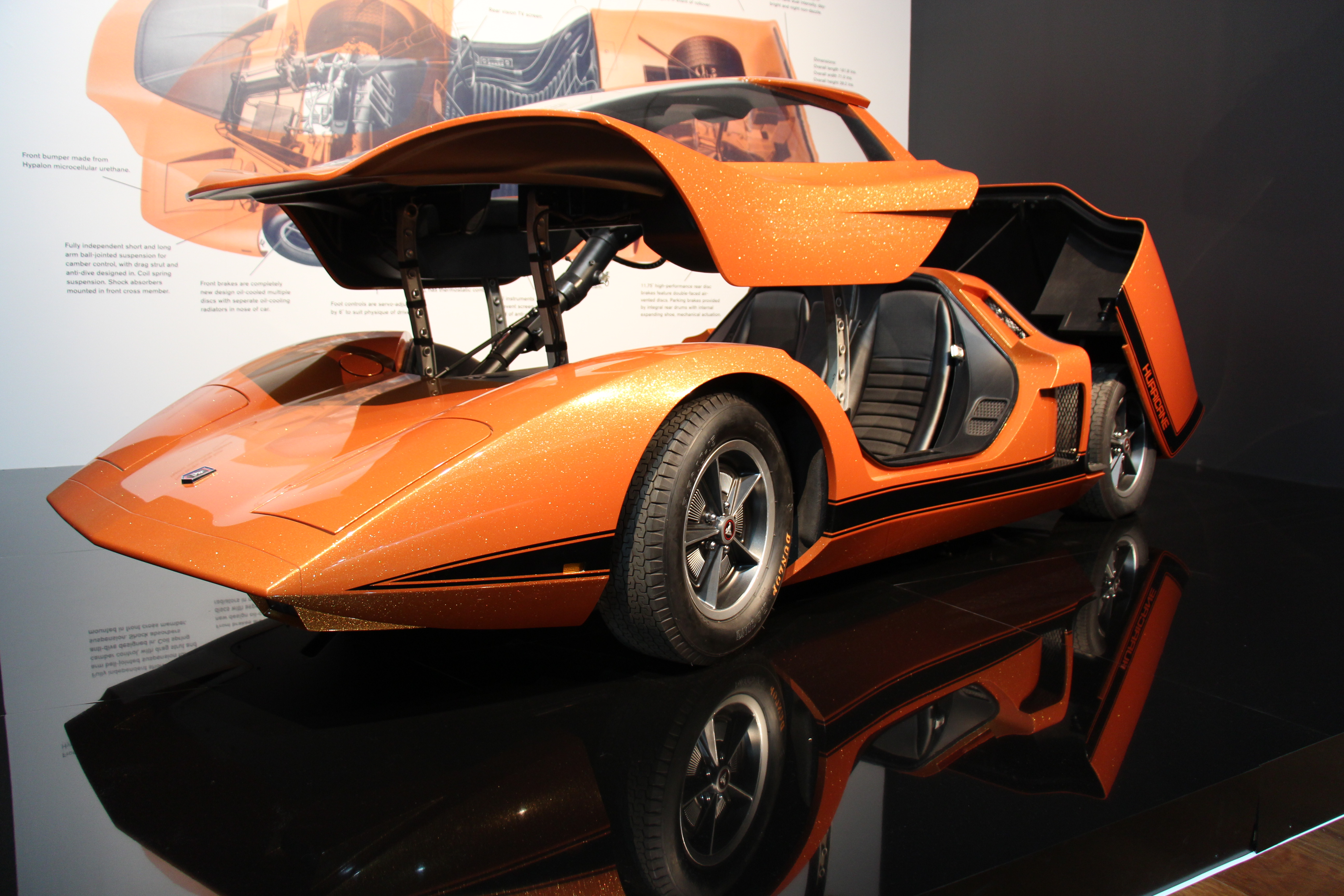
9. **Shape-Shifting Car Body for Aerodynamics**If you’ve ever watched a sci-fi flick and wondered why cars don’t just, you know, *change shape* to become more aerodynamic, then you’re on the same wavelength as some truly ambitious automotive engineers. The idea behind a shape-shifting car body was glorious: a vehicle that could dynamically alter its form, optimizing its aerodynamics for various speeds and driving conditions. Imagine a sleek, low-slung missile on the highway, then a more upright, maneuverable form for city traffic. Pure genius, right?
This was the kind of innovation that whispered promises of unprecedented fuel efficiency and blistering performance. By reducing drag at high speeds and perhaps improving downforce, these vehicles wouldn’t just look cool, they’d redefine the very physics of driving. It was a vision of intelligent design where the car actively adapted to its environment, constantly seeking peak efficiency and control.
But here’s where the rubber met the road, and the road won. Creating reliable mechanisms that could constantly change the car’s exterior shape, while enduring the relentless assault of real-world driving conditions – potholes, gravel, extreme temperatures, and general road grime – proved to be an engineering Gordian knot. We’re talking about complex actuators, flexible materials, and intricate sensor systems that would make even a fighter jet blush.
The sheer complexity didn’t just translate to a higher likelihood of failure; it catapulted the cost of development and manufacturing into the stratosphere. For an industry always balancing innovation with mass-market viability, this was a non-starter. So, while the dream of a morphing machine remains tantalizing, the technical hurdles and prohibitive price tag consigned the shape-shifting car body to the realm of captivating concepts, rather than a street-legal reality.
10. **Biometric Driver Recognition System**In an age obsessed with security and personalization, the biometric driver recognition system sounded like the ultimate automotive upgrade. Imagine stepping into your car, and with a mere fingerprint, an eye scan, or even just your unique gait, the vehicle instantly recognizes you. It unlocks, adjusts your seat, mirrors, climate control, and favorite radio station, all before your rear even hits the leather. Talk about seamless! It promised not just enhanced security against thieves but a truly personalized, ready-to-go driving experience every single time.
The allure was undeniable: a fortress on wheels that only responded to its rightful owner, and a digital butler that anticipated your every driving whim. It felt like a natural evolution of smart technology, moving beyond clunky keys and user profiles to something far more intuitive and integrated. The vision was of a car that truly understood *you*, making the mundane act of driving feel a little bit more like a bespoke luxury.
However, the real world, as it often does, threw a wrench into this high-tech utopia. First up were the privacy concerns, which, let’s be honest, are a constant companion to any biometric tech. People get understandably twitchy about their personal data, especially when it’s linked to something as essential as their car. Who has access to that data? How is it stored? The questions are endless, and the trust is hard-won.
Then came the far more practical issues: system reliability. What happens when your finger is wet, or your glasses fogged? What about different lighting conditions affecting an eye scan? The technology proved finicky, struggling to maintain consistent accuracy across the vast spectrum of real-world scenarios. And, of course, the cost. Implementing such a sophisticated, multi-layered biometric system pushed vehicle prices higher, limiting its appeal and consigning it to the “nice idea, but not quite yet” pile.
Read more about: Beyond the SE: Apple Unleashes the iPhone 16E, a Budget-Friendly Powerhouse Redefining the Mid-Range Game

11. **External Airbags**We’re all familiar with airbags inside the car, those life-saving soft pillows that deploy in a nanosecond to cushion you from impact. But what about airbags *outside* the car? Yes, you heard that right. The idea of external airbags was floated as a revolutionary way to literally soften the blow of a collision, not just for the occupants but potentially for pedestrians or other vehicles. Imagine an accordion of air erupting from your car’s exterior, absorbing energy before the crunch.
The promise was tantalizing: significantly reduced damage to the vehicle’s bodywork in a fender-bender, and crucially, a potentially massive leap forward in pedestrian safety. In theory, these external cushions could dissipate kinetic energy before a person even made contact with the hard surfaces of the car, transforming a potentially fatal impact into something far less severe. It was a bold, humanitarian vision for automotive safety.
However, the leap from theory to practical application proved to be a cavernous one. The primary hurdle was the astonishing difficulty of accurately deploying these things in a crash scenario. How do you differentiate between a gentle tap in a parking lot and an imminent collision with a pedestrian or another car? False deployments would be, to put it mildly, an absolute nightmare – imagine your car suddenly sprouting airbags on the highway!
Beyond the precision problem, there were the practicalities: the added weight of all those airbag modules and deployment mechanisms, which would negatively impact fuel efficiency and handling. And, predictably, the cost. Developing and integrating such a complex, reliable external system pushed expenses sky-high. So, while the intention was admirable, the technological challenges and the inherent risks of misfire were simply too great, leaving external airbags a safety innovation that literally couldn’t get off the ground.
Read more about: Unpacking the SUV Safety Debate: What Families Need to Know Beyond the Marketing Hype
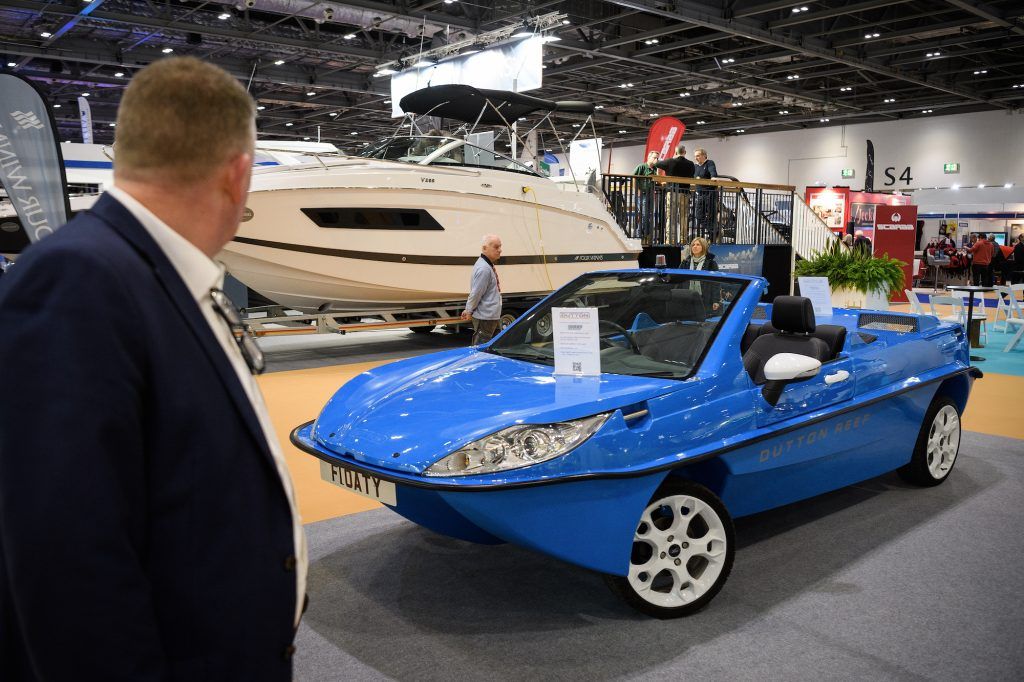
12. **Amphibious Cars**Who among us hasn’t, at some point, fantasized about driving straight off a dock and into the water, transforming our daily commuter into a sleek, land-and-sea-faring beast? The amphibious car, a staple of Bond films and outlandish concepts, promised exactly that: a vehicle equally at home on asphalt and in the waves. Models like the quirky Amphicar 770 even made it to limited production, blending the freedom of the open road with the serenity of a leisurely cruise. It was the ultimate novelty, the pinnacle of dual-purpose engineering!
The appeal wasn’t just about novelty, either. For certain niche markets, like utility vehicles in remote, water-laden areas, or even search and rescue operations, the ability to seamlessly transition from land to water held genuine practical utility. It spoke to a sense of unbridled adventure, a true liberation from the constraints of traditional transportation infrastructure.
But as is often the case with attempting to be a master of two trades, the amphibious car ended up being a master of none. The compromises in design were simply too significant. To function on water, the vehicle needed a buoyant hull, propellers, and waterproofing; to function on land, it needed wheels, axles, and roadworthiness. The resulting mash-up was a vehicle that was generally too heavy and ungainly for optimal road performance, and too inefficient and slow for serious aquatic navigation.
The practicality was severely limited. You wouldn’t want to take an amphibious car on a rough ocean voyage, nor would it outcompete a modern sedan on the highway. The market, it turned out, was incredibly small, essentially comprising eccentric collectors and novelty seekers. The cost of engineering these dual capabilities meant a hefty price tag, pushing them firmly out of mass-market reach. So, despite their undeniable charm and unique appeal, amphibious cars remain a fascinating, yet commercially impractical, footnote in automotive history.
Car Model Information: 2025 Acura RDX Base
Caption: Amphicar Model 770
Name: Amphicar Model 770
Manufacturer: Quandt Group
Production: 1960–1965,3,878 built
ModelYears: 1960–1968
BodyStyle: 2-door cabriolet,with boat features
Layout: RR layout
Engine: straight-4
Transmission: Manual transmission
Length: 171 in
Abbr: oncite book
Width: 62 in
Height: 60 in
Weight: convert
Wheelbase: 84 in
Last: Cardew
First: Basil
Title: Daily Express Review of the 1966 Motor Show
Year: 1966
Publisher: Beaverbrook Newspapers Ltd
Location: London
Designer: Hans Trippel
Powerout: 38 bhp
Categories: Articles with short description, CS1 maint: publisher location, Cars of Germany, Commons category link is on Wikidata, Rear-engined vehicles
Summary: The Amphicar Model 770 is an amphibious automobile which was launched at the 1961 New York Auto Show. It was made in West Germany and marketed from 1961 to 1968, with production ceasing in 1965.
Designed by Hans Trippel, the amphibious vehicle was manufactured by the Quandt Group at Lübeck and at Berlin-Borsigwalde, with a total of 3,878 manufactured in a single generation. The name Amphicar is a portmanteau of “amphibious” and “car”.
A spiritual descendant of the Volkswagen Schwimmwagen, and the Trippel SG6, the Amphicar offered only modest performance compared to most contemporary boats or cars, featured navigation lights and flag as mandated by the US Coast Guard – and after operation in water, required greasing at 13 points, one of which required removal of the rear seat.
In 2014, the publication Petrolicious described the Amphicar as “good for one thing: fun. It’s not quick or flashy, but it’s iconic, unique and friendly. What more could you ask from a vintage car? The Amphicar might not make any sense and that’s precisely why it’s so wonderful.”
Get more information about: Amphicar
Buying a high-performing used car >>>
Brand: Amphicar Model: Amphicar 770
Price: $42,564 Mileage: 4,198 mi.
Read more about: From Chrome Karts to Custom Monsters: 14 Wild Rides of the Rich and Famous That’ll Make You Say ‘Wait, What?!’

13. **Voice-Controlled Vehicles**Voice control for your infotainment system? Sure, why not. For navigation? Absolutely. But fully voice-controlled vehicles, where physical controls take a backseat to your dulcet tones, were once touted as the next frontier of hands-free driving. Imagine simply telling your car to “turn left at the next intersection,” “increase speed to 60,” or even “brake now!” without ever lifting a finger from the wheel (or where the wheel *used* to be). It promised a futuristic, intuitive, and ultimately safer driving experience, minimizing physical distractions.
The vision was of a truly seamless interface between human and machine, a car that understood commands as readily as any sentient co-pilot. It tapped into the ultimate convenience, allowing drivers to keep their eyes on the road and their hands where they belonged – though in a fully voice-controlled car, where exactly *is* that? The allure of simply speaking your intentions and having the vehicle respond instantly was a powerful one, promising a driving experience of unparalleled ease.
However, anyone who has ever wrestled with a recalcitated voice assistant knows the harsh truth: reliability is a fickle beast. The complexity of accurately interpreting human speech, with all its nuances, accents, and background noise, proved to be a monumental challenge. Imagine trying to slam on the brakes in an emergency, only for your car to misinterpret “brake” as “bake” and turn on the seat heaters. Suddenly, those physical controls don’t look so bad.
The safety concerns were paramount. In critical situations, the instant, tactile feedback of a physical button or pedal is irreplaceable. Relying solely on voice input introduced unacceptable delays and the terrifying potential for misinterpretation, leading to catastrophic consequences. So, despite our increasingly verbal interactions with technology, the fully voice-controlled vehicle, free from any physical overrides, remains a dangerous dream, a casualty of unreliable tech and fundamental safety needs.
Read more about: Beyond the Sticker Price: A Comprehensive Consumer Reports Guide to the 2015 Ford F-150’s True Cost and Value
14. **Virtual Reality Dashboards**For a moment, some innovators imagined we might completely ditch the physical dashboard, replacing it with a dazzling virtual reality interface. Picture this: instead of static gauges and screens, you’re enveloped in an immersive digital environment, where critical driving information floats dynamically, navigation is projected in augmented reality onto the road ahead, and your vehicle’s status is displayed in glorious 3D. It promised to be an incredibly engaging, futuristic driving experience that would redefine how we interact with our cars.
The idea was to transform the mundane into the magical, to elevate the act of driving beyond simple mechanics into a rich, interactive digital landscape. For tech enthusiasts and those craving the next big thing, the concept of a VR dashboard was undoubtedly exciting, offering customization and depth that traditional displays could never match. It was a bold step towards turning the car’s cabin into a truly personalized, digital cocoon.
Yet, this audacious leap into the virtual realm stumbled hard on some very tangible problems. The biggest villain in this story? Driver distraction. While an immersive display sounds cool, having your eyes and brain constantly processing complex virtual graphics instead of the actual road ahead is a recipe for disaster. The potential for sensory overload and delayed reaction times was simply too high, raising red flags for every safety regulator out there.
Then there’s the delightful issue of motion sickness. Not everyone’s stomach is built for virtual reality, especially when the physical world around you is moving independently of the digital one. Add to this the prohibitive cost of developing and integrating such high-fidelity VR systems, and the appeal quickly dwindled. Virtual reality dashboards, while a visually stunning concept, proved to be an impractical, distracting, and potentially nauseating innovation that prioritized futuristic flair over fundamental safety and comfort.
Read more about: The Revival Circuit: 12 Forgotten Concepts That Changed the Automotive Industry
So, there you have it: a fascinating, sometimes cringeworthy, but always educational tour through the automotive industry’s Hall of Shame. From grand visions of hydrogen highways to the humble misstep of a clunky seatbelt, these innovations remind us that even the smartest minds can miss the mark. They’re a testament to the unpredictable dance between ambition and reality, proving that for every sleek concept that shines, there’s another that spectacularly crashes and burns. But hey, that’s progress, right? And sometimes, learning what *doesn’t* work is the fastest route to discovering what truly does.





